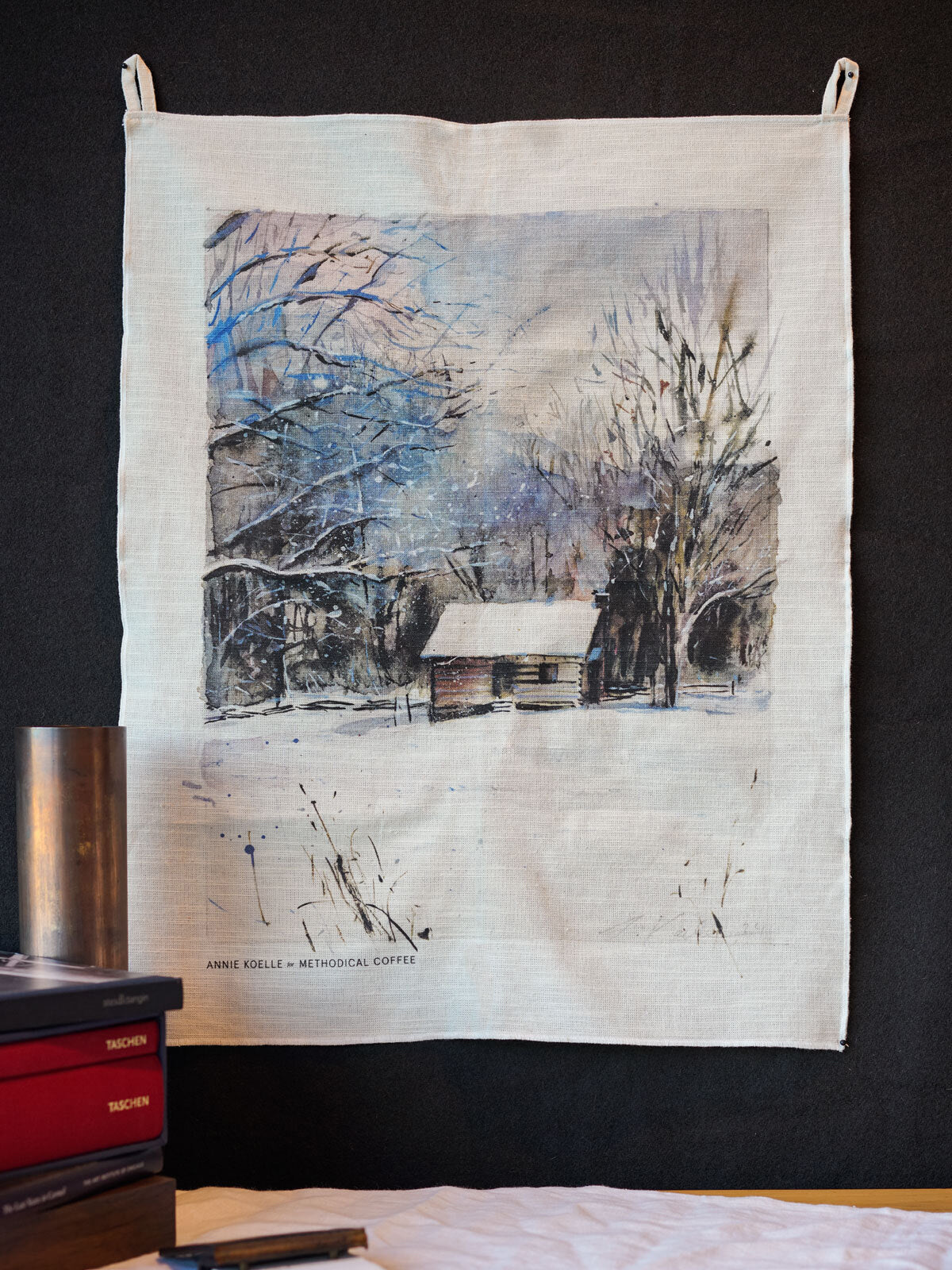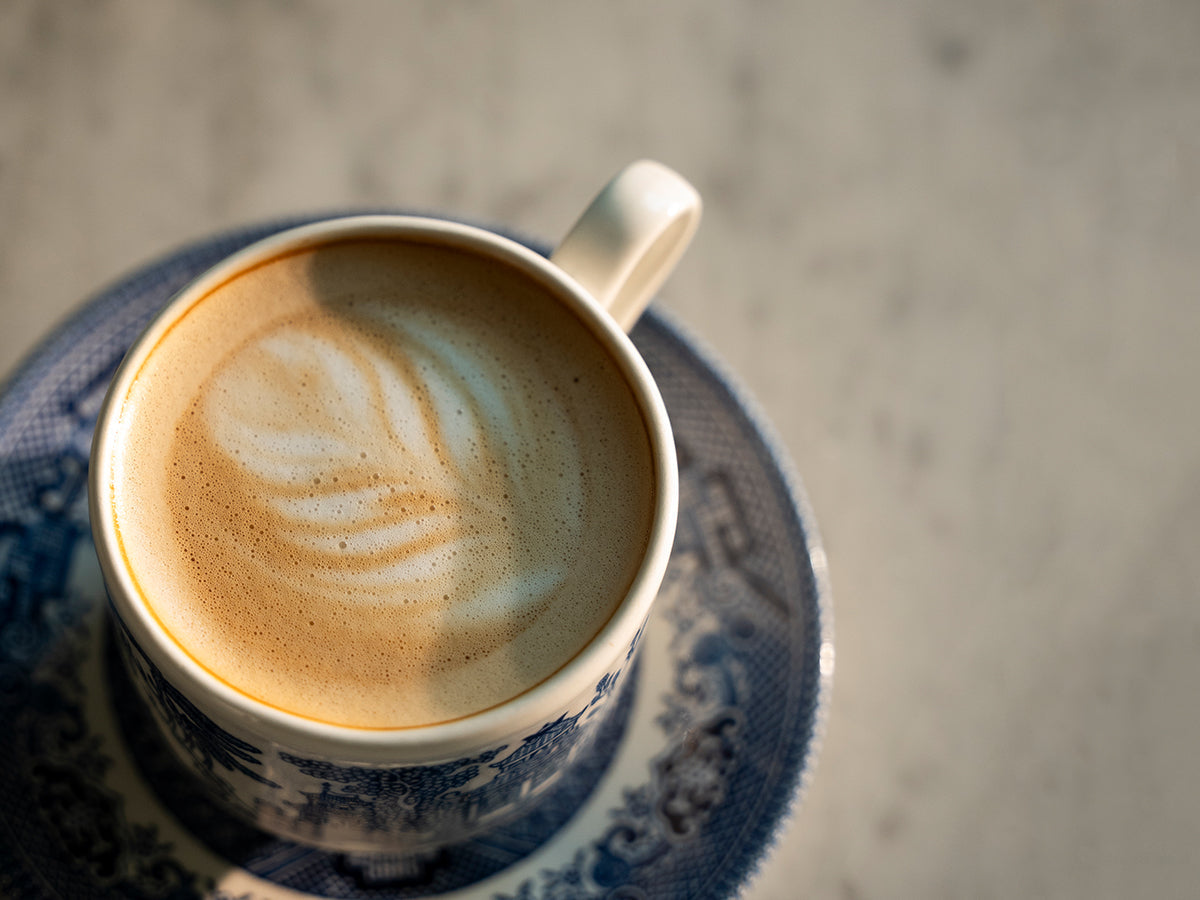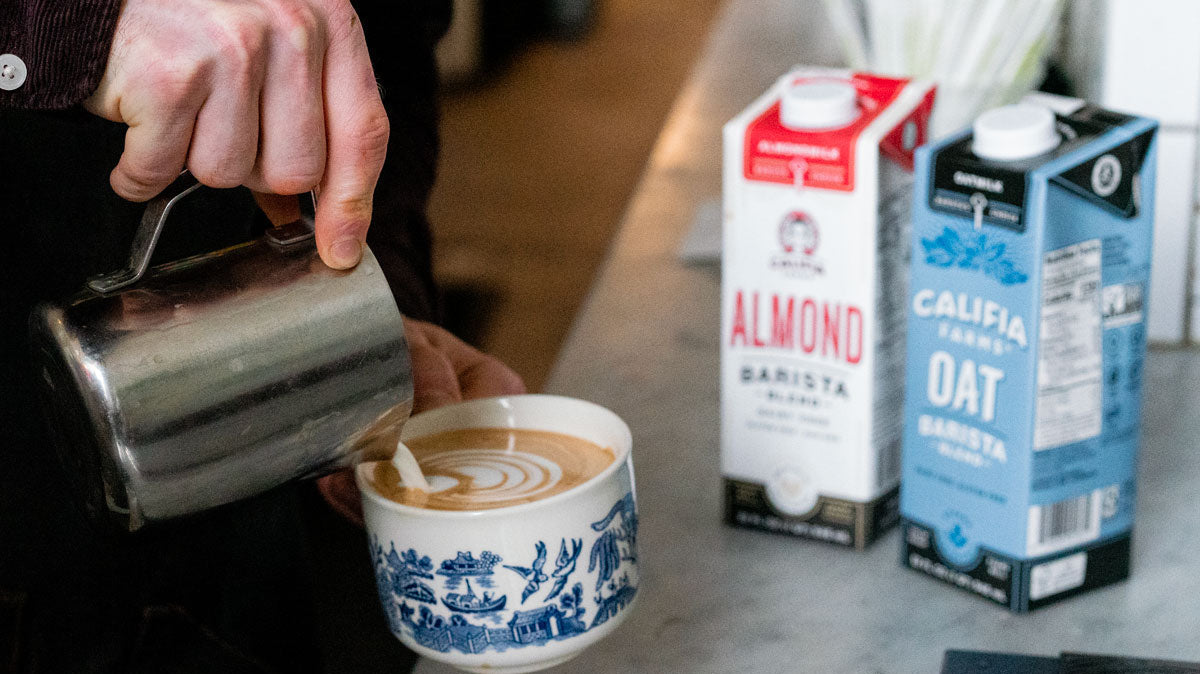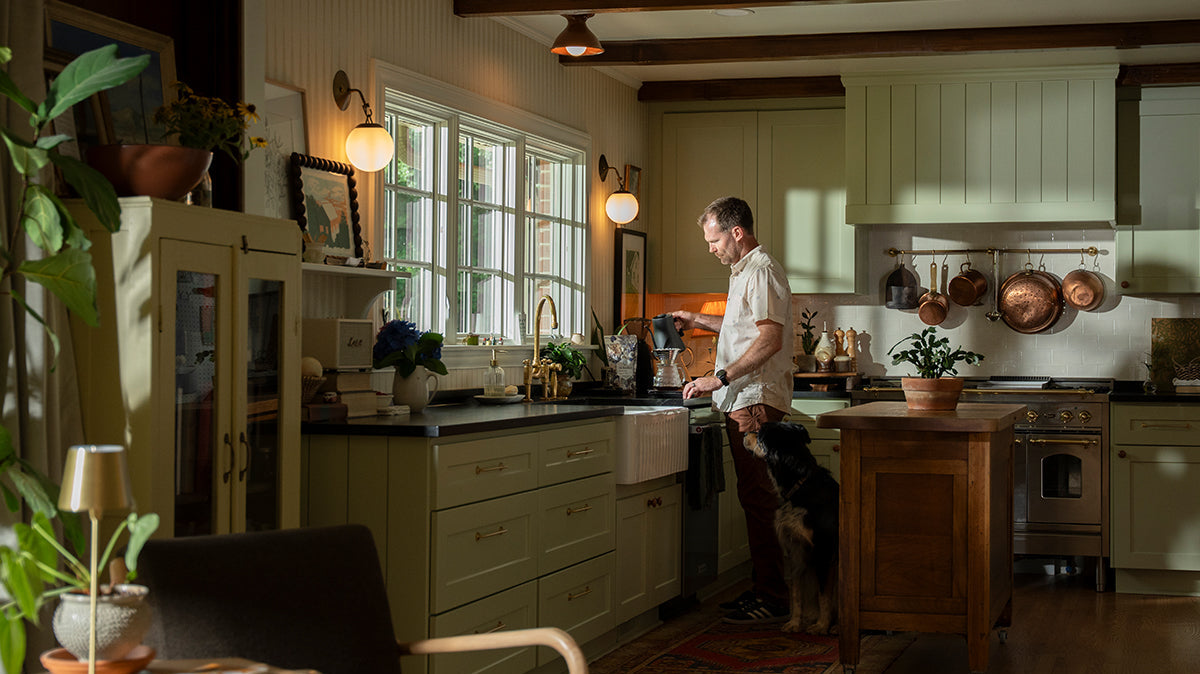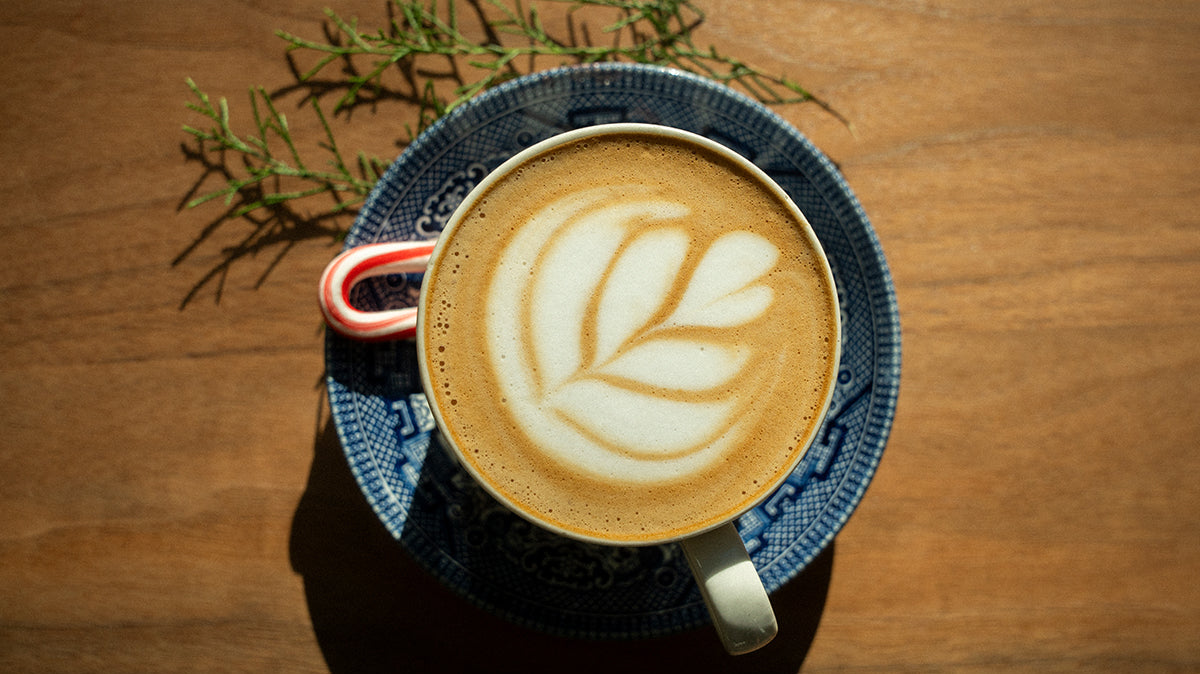There’s something indulgent about a cappuccino at your favorite café, but they’re surprisingly easy to make at home. Whether you’re perfecting your barista skills or simply craving a creamy pick-me-up, this classic drink is well worth mastering. In this guide, we’ll explore what makes a cappuccino unique, share a few popular variations, and walk you through how to craft the perfect one in your own kitchen.
What is a cappuccino?
A cappuccino is a popular espresso-based drink made with equal parts espresso, steamed milk, and milk foam. Traditionally served in a 6-ounce cup, its bold, rich espresso is softened by silky milk and topped with light, airy froth. Some cafés also finish it with a dusting of cocoa or cinnamon.
Not much has changed about cappuccinos over the years, though a few variations have emerged. Some coffee shops stick to the traditional 1:1:1 ratio, while many third-wave cafés serve a ‘wet’ cappuccino—espresso with more steamed milk and less foam. Serving sizes may also vary, but the standard cappuccino remains a modest 6 ounces, designed to highlight both the espresso’s intensity and the milk’s sweetness.
Cappuccino vs. latte
While both drinks are made with espresso and milk, a latte uses much more steamed milk, typically filling a 12-ounce cup. A cappuccino is about half the size yet uses the same amount of espresso, resulting in a stronger coffee flavor. Lattes are smooth and creamy, with no extra foam on top, whereas cappuccinos are topped with their signature frothy layer. Wet cappuccinos fall somewhere in between, with the only real difference from a latte being the amount of milk added to the espresso.
Learn more: Cappuccino vs. Latte vs. Macchiato
The origin of the cappuccino
The cappuccino originated in 18-century Vienna, where a coffee drink called the kapuziner was served with cream, sugar, and sometimes spices. Its name came from the Capuchin monks, whose brown hooded robes matched the drink’s color.
Italy later adopted the name—cappuccino means “little hood” in Italian—and by the early 1900s, the drink began to take the form we know today. The rise of the espresso machine helped it gain popularity, first in specialty cafés and eventually across Italy, where it was traditionally served in small, preheated porcelain cups with equal parts espresso, steamed milk, and foam.
Types of cappuccinos
All cappuccinos are made with espresso and milk, but some versions may have more or less foam or even come served over ice. Here are a few you may encounter in different cafés and regions:
Wet cappuccino
Made with more steamed milk and less foam, a wet cappuccino has a creamier body and a milder coffee flavor. Common in third-wave coffee shops, it’s often preferred by those who enjoy a softer mouthfeel and a subtler layer of foam.
Dry cappuccino
With more milk foam and less steamed milk, a dry cappuccino offers a lighter body and a more pronounced espresso flavor. Its thick foam cap creates an airy texture and remains the standard in European cafés.
Iced cappuccino
An iced cappuccino keeps the same espresso-to-milk ratio as a traditional cappuccino but is served chilled over ice. Essentially a smaller, stronger iced latte, it delivers the boldness of a cappuccino in a cool, refreshing format.
Freddo cappuccino
Originating in Greece, a Freddo cappuccino is made by shaking espresso with ice until chilled, then topping it with a layer of cold, frothed milk. It’s a frothy, refreshing take that’s perfect for warm weather.
What is in a cappuccino?
For such a rich and nuanced drink, the ingredients needed to make a cappuccino are surprisingly simple.
Coffee: Medium and dark roasts are most common because their boldness balances the natural sweetness of the milk. Traditional Italian cappuccinos often use a darker, more bitter roast for the espresso. We recommend a high-quality medium roast coffee for a more complex and less bitter flavor profile.
Milk: Whole milk or barista-style non-dairy alternatives create the best texture—their higher fat content produces a creamier body and richer taste. You can use lower-fat milk, but it may give your cappuccino a thinner mouthfeel.
Optionally, you can add a touch of sweetener or a dusting of cocoa powder or cinnamon to adjust the flavor to your taste.
Equipment for making a cappuccino
To get started, you’ll need the following equipment:
-
Espresso machine (or alternative espresso brewing equipment)
-
Steam wand (or milk frothing equipment)
-
Steaming pitcher
Cappuccinos are traditionally made using an espresso machine since they can efficiently steam milk while pulling espresso shots. But that’s not the only way to make them.
You can brew espresso for your cappuccino using an Aeropress, Moka pot, or French press coffee maker. Then, heat the milk and use a hand whisk, milk frother, or French press to create foam. The result won’t be exactly like what you’re used to getting at your favorite coffee shop, but you’ll still end up with a delicious cappuccino.
How to make a cappuccino at home
A great cappuccino doesn’t require a professional setup—just the right technique and a little practice. Whether you have a full espresso machine or are working with a more basic setup, the process is simple: brew a shot of espresso, steam or froth your milk, then combine the two for a perfectly balanced cup.
Step one: Pull your espresso
Start by dosing your coffee—about 18 to 20 grams for a standard double shot—and grind it to a fine texture. If using an espresso machine, distribute the grounds evenly in the portafilter, tamp firmly, and pull your shot. Aim for a 1:2 ratio of coffee to espresso (roughly a 36- to 40-gram yield), and adjust as needed to dial in the taste.
No espresso machine? You can brew concentrated coffee instead using a Moka pot, AeroPress, or French press, aiming for a similar strength to traditional espresso.
Learn more:
Step two: Steam your milk
Measure about 5 ounces of milk into your steaming pitcher or a container that’s safe for heating:
-
With an espresso machine: Submerge the tip of the steam wand just under the milk’s surface and turn it on to introduce air—this creates the frothy layer. Once the milk has expanded by about half, lower the wand fully to heat it evenly. Stop steaming around 150°F (65°C) to avoid scalding.
-
Without a machine: Warm the milk on the stovetop or in the microwave until hot but not boiling. Then, use a handheld frother, electric whisk, or French press to froth it, aerating until it doubles in volume and forms a light, airy foam.
Step three: Pour and enjoy
Give your milk pitcher a gentle tap on the counter to pop any large bubbles. Tilt your cappuccino cup to about a 45-degree angle and begin pouring from 5 to 6 inches above the espresso, aiming for the center. Start slowly to let the milk and espresso blend, then lower the pitcher as the cup fills to pour latte art or lay the foam on top.
If you’re feeling traditional, garnish with cinnamon or cocoa powder and enjoy!
Which milk makes the best cappuccino?
A great cappuccino starts with the right milk. While you can use many types, some create better texture and flavor than others.
Whole milk
Whole milk has long been the favorite of baristas. Its fat content helps create smooth, stable microfoam and a rich, creamy mouthfeel. It also balances the espresso’s acidity, bringing out its natural sweetness.
Oat milk
Oat milk is one of the best non-dairy options. Its flavor pairs well with espresso, and its fat content allows for good foam. Barista-grade oat milks often include thickeners that make them easier to steam for cappuccinos and lattes.
Other milk options
While whole milk and oat milk are the top picks, you can also use 2% milk, soy milk, or almond milk. Nonfat milk and coconut milk tend to lack enough fat to create proper foam, while heavy cream and half-and-half are too dense to froth at all.
Cheers to silky capps
Waking up to a creamy, perfectly crafted cappuccino is one of life’s simple pleasures—it’s the perfect start to the weekend or any day. Whether you have an at-home espresso setup or you’re using a different brewing method, you can create that café-worthy experience at home in just a few steps.
Ready to take your cappuccinos to the next level? Explore our selection of carefully roasted whole bean coffees, each one designed to bring out the best in your cup.
You might also like:



